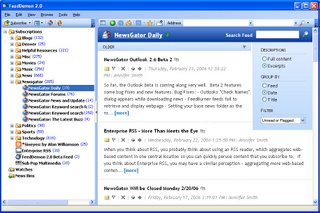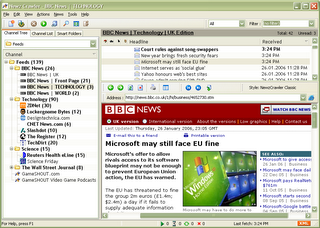[SWOT]
SWOT Analysis is a strategic planning tool used to evaluate the Strengths, Weaknesses, Opportunities, and Threats involved in a project or in a business venture or in any other situation of an organization or individual requiring a decision in pursuit of an objective. It involves monitoring the marketing environment internal and external to the organization or individual.
SWOT Analysis Wal-MartStrengths.
* Wal-Mart is a powerful retail brand. It has a reputation for value for money, convenience and a wide range of products all in one store.
* Wal-Mart has grown substantially over recent years, and has experienced global expansion (for example its purchase of the United Kingdom based retailer ASDA).
* The company has a core competence involving its use of information technology to support its international logistics system. For example, it can see how individual products are performing country-wide, store-by-store at a glance. IT also supports Wal-Mart's efficient procurement.
* A focused strategy is in place for human resource management and development. People are key to Wal-Mart's business and it invests time and money in training people, and retaining a developing them.
Weaknesses.
* Wal-Mart is the World's largest grocery retailer and control of its empire, despite its IT advantages, could leave
it weak in some areas due to the huge span of control.
* Since Wal-Mart sell products across many sectors (such as clothing, food, or stationary), it may not have the
flexibility of some of its more focused competitors.
* The company is global, but has has a presence in relatively few countries Worldwide.
Opportunities.
* To take over, merge with, or form strategic alliances with other global retailers, focusing on specific markets such as Europe or the Greater China Region.
* The stores are currently only trade in a relatively small number of countries. Therefore there are tremendous opportunities for future business in expanding consumer markets, such as China and India.
* New locations and store types offer Wal-Mart opportunities to exploit market development. They diversified from large super centres, to local and mall-based sites.
* Opportunities exist for Wal-Mart to continue with its current strategy of large, super centres.
Threats.
* Being number one means that you are the target of competition, locally and globally.
* Being a global retailer means that you are exposed to political problems in the countries that you operate in.
* The cost of producing many consumer products tends to have fallen because of lower manufacturing costs.
Manufacturing cost have fallen due to outsourcing to low-cost regions of the World. This has lead to price competition, resulting in price deflation in some ranges. Intense price competition is a threat.
'Wal-Mart Stores, Inc. is the world's largest retailer, with $256.3 billion in sales in the fiscal year ending Jan. 31, 2004. The company employs 1.6 million associates worldwide through more than 3,600 facilities in the United States and more than 1,570 units . . .more? Go to Wal-Mart Facts
[Value Chain Model]The value chain is a concept from business management that was first described and popularized by Michael Porter in his 1985 best-seller, Competitive Advantage: Creating and Sustaining Superior Performance.The value chain categorizes the generic value-adding activities of an organization. The "primary activities" include: inbound logistics, operations (production), outbound logistics, marketing and sales, and services (maintenance). The "support activities" include: administrative infrastructure management, human resource management, R&D, and procurement. The costs and value drivers are identified for each value activity. The value chain framework quickly made its way to the forefront of management thought as a powerful analysis tool for strategic planning. Its ultimate goal is to maximize value creation while minimizing costs.
To better understand the activities through which a firm develops a competitive advantage and creates shareholder value, it is useful to separate the business system into a series of value-generating activities referred to as the value chain. In his 1985 book Competitive Advantage, Michael Porter introduced a generic value chain model that comprises a sequence of activities found to be common to a wide range of firms. Porter identified primary and support activities as shown in the following diagram

The Value Chain framework of Michael Porter is a model that helps to analyze specific activities through which firms can create value and competitive advantage.
Inbound LogisticsIncludes receiving, storing, inventory control, transportation scheduling.
OperationsIncludes machining, packaging, assembly, equipment maintenance, testing and all other value-creating activities thattransform the inputs into the final product.
Outbound LogisticsThe activities required to get the finished product to the customers: warehousing, order fulfillment, transportation,distribution management.
Marketing and SalesThe activities associated with getting buyers to purchase the product including channel selection, advertising,promotion, selling, pricing, retail management, etc.
ServiceThe activities that maintain and enhance the product's value, including customer support, repair services, installation,training, spare parts management, upgrading, etc.
ProcurementProcurement of raw materials, servicing, spare parts, buildings, machines, etc.
Technology DevelopmentIncludes technology development to support the value chain activities, such as Research and Development, Processautomation, design, redesign.
Human Resource ManagementThe activities associated with recruiting, development (education), retention and compensation of employees andmanagers.
Firm InfrastructureIncludes general management, planning management, legal, finance, accounting, public affairs, quality management, etc.
[Business process reengineering]
Business Process Reengineering is a management approach aiming at improvements by means of elevating efficiency andeffectiveness of the processes that exist within and across organizations.In order to achieve the major improvements BPRis seeking for, the change of structural organizational variables, and other ways of managing and performing work is often considered as being insufficient. For being able to reap the achievable benefits fully, the use of informationtechnology (IT) is conceived as a major contributing factor. While IT traditionally has been used for supporting the existing business functions, i.e. it was used for increasing organizational efficiency, it now plays a role as enabler of new organizational forms, and patterns of collaboration within and between organizations.
BPR reached its heyday in the early 1990's when Michael Hammer and James Champy published their best-selling book,"Reengineering the Corporation". The authors promoted the idea that sometimes radical redesign and reorganization of an enterprise (wiping the slate clean) was necessary to lower costs and increase quality of service and that information technology was the key enabler for that radical change. Hammer and Champy felt that the design of workflow in most large corporations was based on assumptions about technology, people, and organizational goals that were no longer valid. They suggested seven principles of reengineering to streamline the work process and thereby achieve significant levels of improvement in quality, time management, and cost:
1. Organize around outcomes, not tasks.
2. Identify all the processes in an organization and prioritize them in order of redesign urgency.
3. Integrate information processing work into the real work that produces the information.
4. Treat geographically dispersed resources as though they were centralized.
5. Link parallel activities in the workflow instead of just integrating their results.
6. Put the decision point where the work is performed, and build control into the process.
7. Capture information once and at the source.
Reengineering Recommendations
* BPR must be accompanied by strategic planning, which addresses leveraging IT as a competitive tool.
* Place the customer at the center of the reengineering effort -- concentrate on reengineering fragmented processes that lead to delays or other negative impacts on customer service.
* BPR must be "owned" throughout the organization, not driven by a group of outside consultants.
* Case teams must be comprised of both managers as well as those will actually do the work.
* The IT group should be an integral part of the reengineering team from the start.
* BPR must be sponsored by top executives, who are not about to leave or retire.
* BPR projects must have a timetable, ideally between three to six months, so that the organization is not in a state of "limbo".
* BPR must not ignore corporate culture and must emphasize constant communication and feedback.
Tools to support BPRWhen a BPR project is undertaken across the organization, it can require managing a massive amount of information about the processes, data and systems. If you don't have an excellent tool to support BPR, the management of this information can become an impossible task. The use of a good BPR/documentation tool is vital in any BPR project.
The types of attributes for in BPR software are:
* Graphical interface for fast documentation
* "Object oriented" technology, so that changes to data (eg: job titles) only need to be made in one place, and the change automatically appears throughout all the organization's procedures and documentation.
* Drag and drop facility so you can easily relate organizational and data objects to each step in the process
* Customizable meta data fields, so that you can include information relating to your industry, business sector or organization in your documentation
* Analysis, such as swim-lanes to show visually how responsibilities in a process are transferred between different roles, or where data items or computer applications are used.
* Support for Value Stream mapping.
* CRUD or RACI reports, to provide evidence for process improvement.
* The ability to assess the processes against agreed international standards
* Simulation software to support 'what-if' analyses during the design phase of the project to develop LEAN processes
* The production of word documents or web site versions of the procedures at the touch of a single button, so that the information can be easily maintained and updated.
[Information systems architecture]
John Zachman introduced a framework for information systems architecture (ISA) that has been widely adopted by systems analysts and database designers. It provides a taxonomy for relating the concepts that describe the real world to the concepts that describe an information system and its implementation. The ISA framework has a simple elegance that makes it easy to remember, yet it draws attention to fundamental distinctions that are often overlooked in systems design. Zachman's framework for information systems architecture (ISA) provides a systematic taxonomy of concepts for relating things in the world to the representations in the computer. It is not a replacement for other programming tools, techniques, or methodologies. Instead, it provides a way of viewing a system from many different perspectives and showing how they are all related.
Overview of the frameworkWhen applied to an information system, the word architecture is a metaphor that compares the construction of a computer system to the construction of a house. The ISA framework is an elaboration of that metaphor. It compares the perspectives in describing an information system to the perspectives produced by an architect in designing and constructing a building:
* Scope--The first architectural sketch is a "bubble chart," which depicts in gross terms the size, shape, spatial relationships, and basic purpose of the final structure. In the ISA framework, it corresponds to an executive summary for a planner or investor who wants an estimate of the scope of the system, what it would cost, and how it would perform.
* Enterprise or business model--Next are the architect's drawings that depict the final building from the perspective of the owner, who will have to live with it in the daily routines of business. They correspond to the enterprise (business) model, which constitutes the design of the business and shows the business entities and processes and how they interact.
* System model--The architect's plans are the translation of the drawings into detailed specifications from the designer's perspective. They correspond to the system model designed by a systems analyst who must determine the data elements and functions that represent business entities and processes.
* Technology model--The contractor must redraw the architect's plans to represent the builder's perspective, which must onsider the constraints of tools, technology, and materials. The builder's plans correspond to the technology model, which must adapt the information system model to the details of the programming languages, I/O devices, or other technology.
* Components--Subcontractors work from shop plans that specify the details of parts or subsections. These correspond to the detailed specifications that are given to programmers who code individual modules without being concerned with the overall context or structure of the system.
References:
http://en.wikipedia.org/wiki/SWOT_analysis
http://en.wikipedia.org/wiki/Value_chain
http://marketingteacher.com/SWOT/walmart_swot.htm
http://www.netmba.com/strategy/value-chain/
http://en.wikipedia.org/wiki/Business_process_reengineering
http://www.teamtechnology.co.uk/business-process-reengineering.html
http://searchcio.techtarget.com/sDefinition/0,,sid19_gci536451,00.html
http://www.netlib.com/bpr1.shtml
http://findarticles.com/p/articles/mi_m0ISJ/is_n3_v31/ai_12547744
Labels: BPR, ISA, SWOT, VCM


